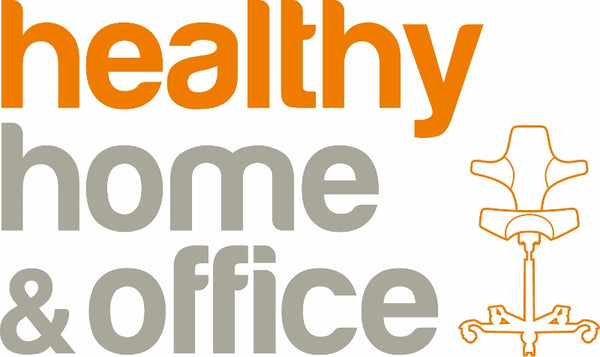
How to Find the Right Desk Height for You? – Sitting & Standing
Share
If you’ve ever felt discomfort after a day at your desk—tight shoulders, aching wrists, or a stiff back—it could be down to something surprisingly simple: your desk height.
We often assume that a “standard” desk height works for everyone. In reality, the ideal desk height is different for each person. Whether you're sitting or standing, the right setup can make a big difference to your posture, comfort, and long-term health.
In this guide, we’ll walk you through how to find your ideal desk height, what to look out for, and when it might be time to consider a height-adjustable desk or book a DSE assessment.
What Is The Problem With Fixed-Height Desks?
Most fixed-height desks are around 72 to 74cm tall, which generally suits the average person when seated. But if you're taller or shorter than average, that “standard” height can quickly cause discomfort.
During the COVID-19 lockdown, as remote working became the norm, many furniture retailers jumped on the trend, launching so-called home office desks. Sales surged—but unfortunately, functionality didn’t always follow. Many of these desks were too tall for comfortable use or featured bulky drawers running across the underside, making it difficult to sit close enough or position your legs properly.
The reality is: your desk should fit you, not the other way around. The wrong desk can lead to bad posture, strain, and long-term discomfort.
Why Desks with Central Drawers Can Wreck Your Posture
While drawers might seem like a handy storage feature, desks with fixed drawers running across the centre can seriously limit your legroom. With less space to sit comfortably, users often have to shift their chairs back or sit lower, which is terrible for your posture. It’s common to see people raising their shoulders and arms just to reach the desk surface—leading to tension in the neck, shoulders, and upper back. Plus, if your chair has armrests, they can collide with the underside of the drawer, forcing you to sit back from the desk.
For a healthier setup, avoid desks with central drawers altogether. They do far more harm than good when it comes to posture. Instead, choose a desk with open leg space.
How to Check If Your Desk Height Is Right (While Sitting)
When you're seated at your desk:
- Your elbows should be at about 90 degrees, resting comfortably by your side.
- Your forearms should sit parallel to the desk surface, not sloping up or down.
- Your shoulders should feel relaxed—not hunched or pulled up.
- Your feet should rest flat on the floor.
If you're raising or lowering your arms just to type or write, your desk (or chair) is at the wrong height.
Tip: Adjust your chair height first, then assess if your desk matches up. If it doesn’t, your Desk may not give you enough flexibility—and that’s where a Height-Adjustable Desk comes in.
What About Height-Adjustable Desk Height?
When working while standing, the same 90-degree elbow rule applies. You’ll also want to:
- Keep your screen at eye level, so you’re not craning your neck.
- Shift between sitting and standing - standing still all day isn’t much better than sitting.
A height-adjustable desk lets you switch between sitting and standing, helping reduce the strain of staying in one position too long.
Why the Right Height Matters
Poor working posture can lead to:
- Neck and shoulder tension
- Wrist pain or repetitive strain injury (RSI)
- Upper & lower back pain
But getting it right isn’t just about avoiding pain—it's about feeling better while you work.
Not Sure Where to Start? Book a DSE Assessment
If you're unsure how to adjust your setup properly, a DSE (Display Screen Equipment) assessment can help. It’s a professional check-up of your workstation—either at home or in the office—to make sure everything is set up correctly for your body and your needs.
Healthy Home & Office offers DSE assessments for individuals and businesses, helping you get the most out of your workspace.
Explore Ergonomic Desk Options
If you're ready to upgrade your setup, take a look at our desk ranges:
- Fixed Height Desks – Simple and sturdy, ideal for traditional setups.
- Height Adjustable Desks – Perfect for flexibility and posture-friendly working.
Final Thoughts
There’s no single answer to the “ideal desk height” question—because the best setup is tailored to you. A height-adjustable desk enables you to switch between both standing and sitting throughout the day - preventing discomfort caused by long periods of sitting.
Need help finding the right fit? Get in touch or book a DSE assessment and let us help you work better, not harder.
